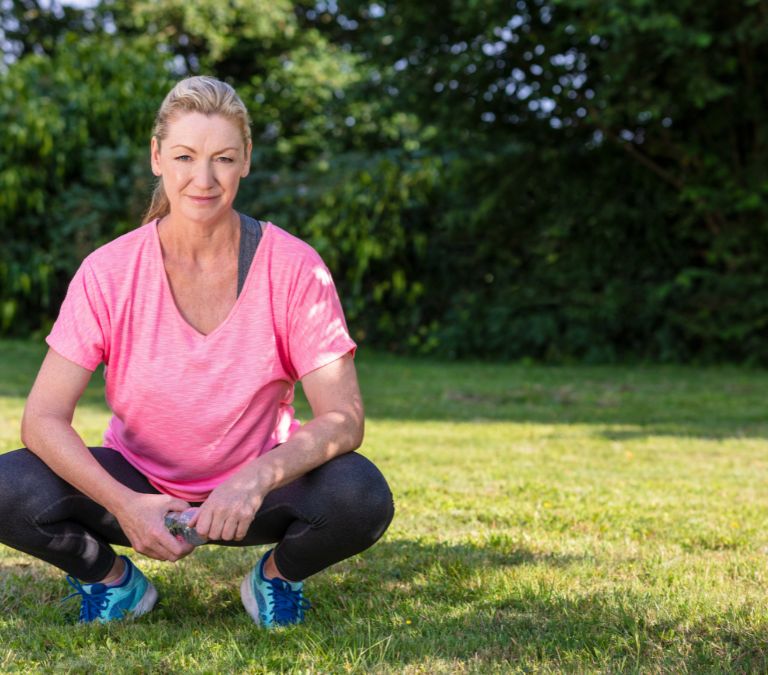At some point in our lives, we must go through the menopause phase. But we are never really prepared for what it means. It is just so much you can learn without experiencing it firsthand. For every woman, the experience is different.
When I was transitioning, I had a friend about the same age as me, so I was glad I had a friend I could share the experience with, but menopause was so different that it wasn’t possible to compare our experiences. The common thing about menopause is the discomfort the symptoms bring.
The first time I had a bout of hot flashes, the heat almost sent me to my knees, and why it might not be as intense for you as it is for me, you agree with me that they can put a crimp in the quality of our lives, That is why we try everything to reduce the effect these symptoms have.
One of the ways we do this is through lifestyle changes. The most common of these changes is what we eat. We are told that including certain meals and removing others will help significantly reduce the symptoms of menopause. However, it is common knowledge that working out helps manage menopausal symptoms and the good thing is there are many menopausal exercises you can do from the comfort of your home that are easy to do and fun. They also help you keep fit and reduce stress, therefore helping you have an improved outlook on life.
Doing these menopause exercises regularly will also help you avoid weight gain and muscle loss, two of the most common symptoms of menopause.
There is no research to prove that these exercises can fight these symptoms, but they make a pretty good argument. The fun thing about these routines is that you do not have to leave your house to do them and require minimal or no equipment. Sounds interesting? Of course, they do.
And I will ensure that the process is as easy and stress-free for you. I have spent a long time curating this list of exercise routines. To help you see the need for them, I have listed the benefit of each and how they help you fight the disagreeable symptoms of menopause.
Top seven Menopause Exercises You Can Do From Home
- It Starts with a Step
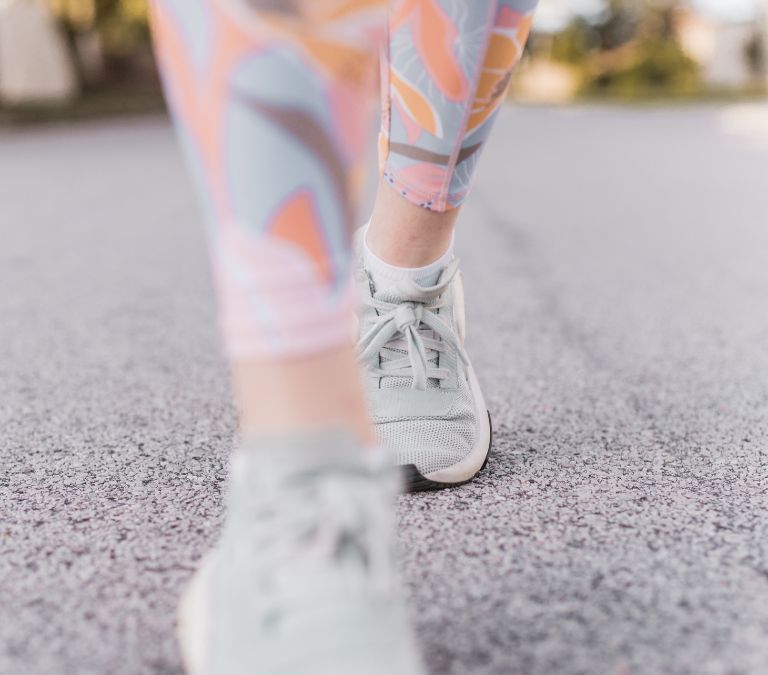
The journey to a healthy menopausal and postmenopausal life starts with a step, or in this case, a series of steps. So, if you are unsure where to start, putting on your walking shoes is a good idea; brisk walking is one of the most basic and inexpensive aerobic exercises for menopause.
Walking at a fast speed burns calories and may also assist with mood swings, as aerobic exercise has been shown to reduce melancholy and anxiety, two frequent menopause symptoms which make walking one of the best menopause exercises you can do right from the comfort of your home if you have a treadmill or in the neighborhood.
Now, you may not want to walk. You may want to handle something a bit more intense. Then, there are other alternatives. You can go for a brisk jog in the morning. Or invest in a good bicycle. I enjoy biking. It allows me to run errands while doing a bit of cardio.
But if you do not want to go biking, you might prefer swimming. Swimming is another beneficial exercise for women in menopause since it is less taxing on the joints than relatively high-impact activities like running. The goal is to include a bit of cardio into your routine, regardless of the form.
Cardio exercises that engage your vast muscle groups while maintaining a high heart rate are too beneficial to be ignored. And the beautiful thing about cardio is that every activity counts. Cardio can help with a lot of the symptoms of menopause. During menopause, there is a chance that we might see an increase in belly fat. It is very likely.
There is also the chance of being under mental and emotional stress. The good thing is that cardio helps with these symptoms. It combats weight gain. And it has been linked to reducing anxiety and depression, although the science isn’t precise yet. Also, you and I know menopause means a marked drop in estrogen levels.
You lose the hormone’s preventive action against heart disease when this happens. Aerobic exercise can help by acting as a protective shield. On most days, strive for at least 30 minutes of physical activity, whether swimming, running, or any other activity.
If that seems too much, you can start with 10 minutes of activity and work it up. Warm up your body with modest training and range-of-motion exercises before you begin.
- Kegels for your Love Life
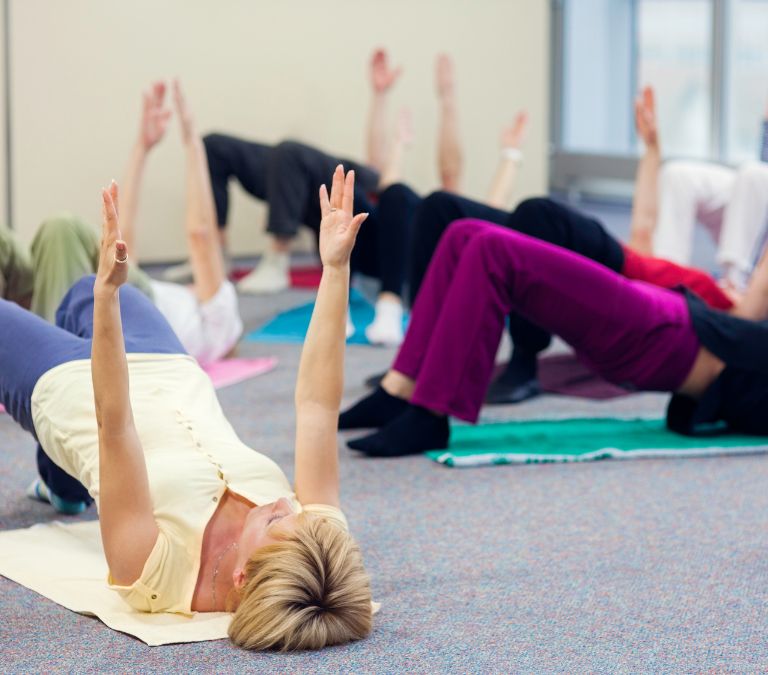
Menopause also stresses other parts of our lives—even our sex life. It is a condition that affects our reproductive system, so it shouldn’t surprise us that it affects our sex life. One of the best menopause exercises to deal with is Kegels. Kegel exercises involve contracting and relaxing the pelvic floor muscles. During menopause, these muscles become weak due to the marked estrogen drop that we must endure.
This weakening can bring about a lot of problems that we see during menopause. Your uterus and bladder are held above your vaginal opening by these muscles. Strengthening these muscles as a menopausal workout will improve your sexual pleasure.
If you’re suffering from pain during sex or problems with arousal or dryness, doing Kegels may help relax the vaginal muscles and improve circulation to the area, boosting arousal and lubrication. They also help with orgasms. This routine will leave you glowing each time your partner visits your bed.
It can also help with urinary incontinence in some cases. In fact, for most people suffering from stress urinary incontinence, Kegel is always prescribed. To get a sense of where these muscles are located, stop urinating in the middle of the flow – this is the type of contraction you want to achieve. However, do not act when frequently urinating since it can be harmful.
What I love the most about Kegels is that you can do it anywhere and anytime—having a lull in the office? Start contracting and watching dishes? Squeeze those muscles. However, although they look simple, it is easy to mess up while doing Kegel. If you’re not sure you’re doing Kegels correctly, then it would be a good idea to seek a specialized physical therapist to educate you on how to perform them.
- Yoga and Meditation
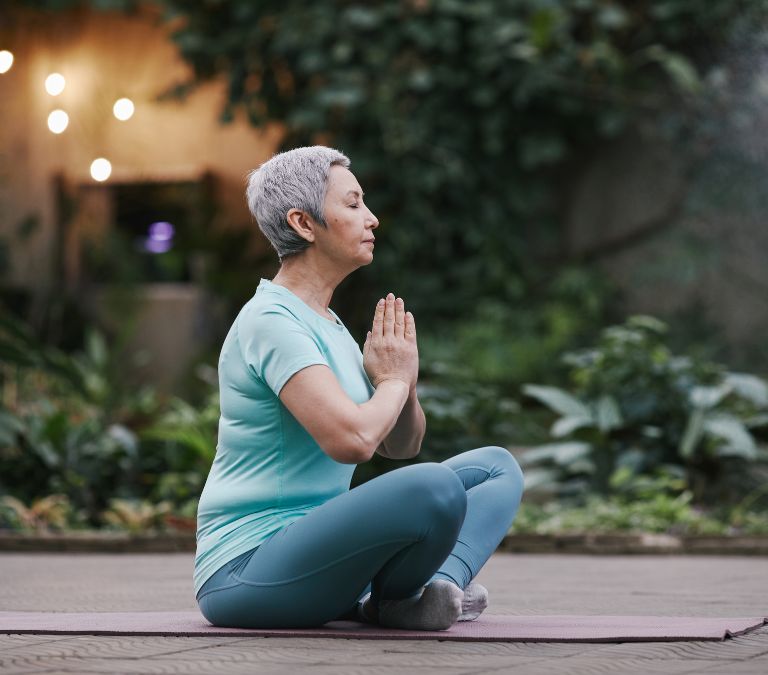
The way you and I experience menopause is probably different. No two people have the same menopausal story. But there is a singular commonality in all women going through this phase of their lives: stress. Menopause and the symptoms it comes with can be very stressful.
Combining that with the stress of our everyday activities makes for a pretty tense woman. One of my friends once said that no one needs relaxation more than a menopausal woman, and I didn’t get it till I became menopausal myself. I spend hours poring over manuals and looking for every possible way to destress.
Now because people are different and our menopausal experiences further these differences, what works for me might not work for you. The key is to find a relaxation method that works for you. It could be yoga, meditation, or deep breathing. I find that a combination of yoga and deep breathing gets me relaxed enough to face the world and for me, that’s one of the best menopause exercises.
Yoga, particularly, has shown immense promise when handling menopausal symptoms. It is a combination of postures and breathing that is aimed at relaxation. I find that it has helped me with stress and my sleeping problems. It might even improve your sex life.
According to a small, early study, yoga can improve sexual function in women 45 years and older. It couldn’t get any better. It can help you sleep better and have you order your first yoga mat. Considering the effects of menopausal symptoms on our sleeping habits, you will do anything to get a good night’s sleep.
This routine helps you achieve this and even makes sex better; it makes sex an essential aspect of your workout routine. So, fish out that yoga mat and start bending. However, remember not to overdo it. If you are new to yoga, starting with something simple and working your way up would be a good idea.
- Strength Training is also Important
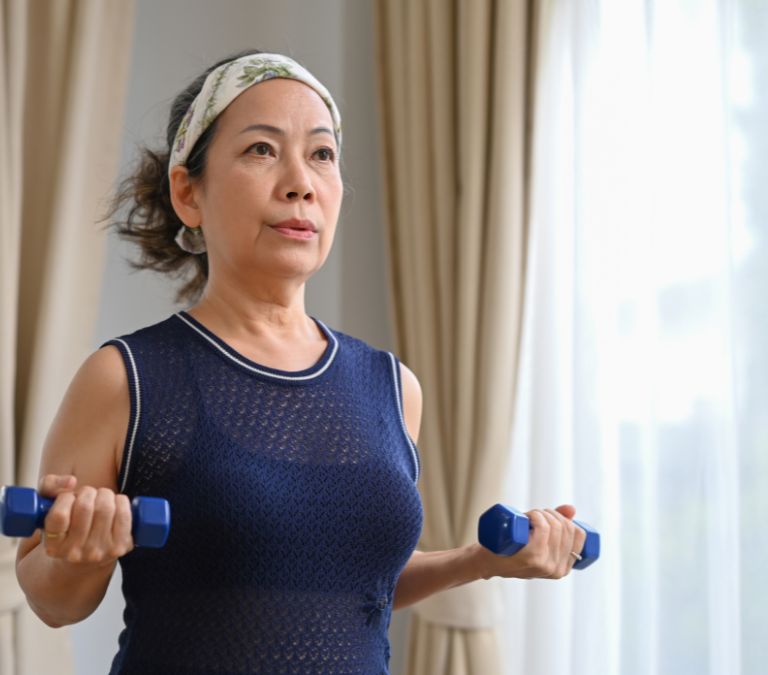
The effect that the reduced level of estrogen has on our body goes beyond the reproductive system. It affects our bones too. Estrogen is implicated in the control of bone metabolism. It is necessary for bone health because it stimulates the activity of osteoblasts, which are responsible for forming new bones.
What this means is that the risk of bone loss increases after menopause. It will probably lead to a condition known as osteoporosis because the bone is weakened and is now more likely to break. I know what you are thinking right now. As if hot flashes and insomnia were not bad enough, there is a chance we might end up needing an orthopedic doctor too.
Enough of the bad news. Let’s talk about how to handle these menopausal complications. The first step is your diet. Getting enough calcium, vitamin D, magnesium, and phosphorus are particularly good for your bone health. Combining this with weight-bearing workouts can help maintain healthy bones.
How? Weight-bearing activities bring about denser, stronger, and less fragile bone because muscle pulls on the bone. Strengthening with weights or machines, hiking, stair climbing, and sports like tennis are excellent options. Keeping exercise interesting by varying your exercises can help you stick with it.
You have to be a bit more careful when doing cardio. This form of exercise can get strenuous. Unlike aerobic exercise, which is done daily, targeted strength training with weights should only be done twice or three times each week, with at least two days of recovery.
- Get your Dancing Shoes on
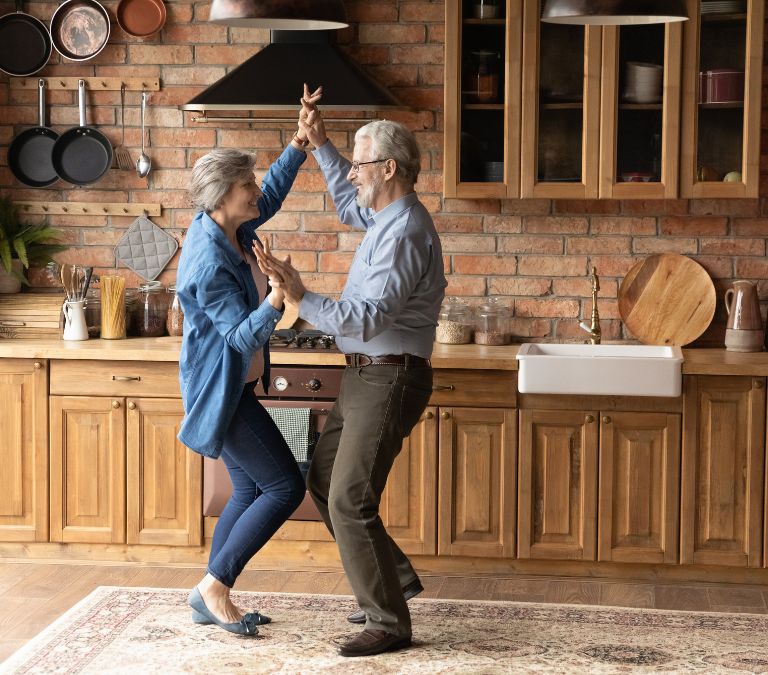
I mean, no one says fighting menopausal symptoms should be boring. You can have fun while at it. And one of the ways to do just that is by throwing on those dancing shoes and rocking the dance halls. But what exactly does dancing help us do? How does it fight any symptoms of menopause?
Estrogen aids in maintaining lean body mass and the distribution of body fat. As a result, the decrease of estrogen after menopause, combined with the sedentary behavior typical of women our age, makes acquiring weight much more accessible. These hormonal changes also modify the location of fat accumulation in your body. You may find that you have more abdominal fat than before.
Dancing is a low-impact workout that can help you burn calories and lose weight. It’s also entertaining. Zumba, a famous dance fitness program, incorporates Latin rhythms into a fast-paced, hip-swaying workout. In the last decade, it has amassed approximately 12 million devoted supporters. Zumba is a Latin-inspired fitness program that appeals to individuals of all ages.
It incorporates salsa, merengue, and other Latin-inspired music. If you’re not quite ready for that, crank up the music and get your groove on in the comfort of your own home. Incorporating a calorie-burning aerobic activity into your daily routine may be enjoyable and beneficial to your health. We already said cardio could be just about anything as long as it exercises your group of large muscles.
If treadmill running and other classical aerobics aren’t your things, try signing up for a dance class. There are even online options that you can try. I find that I enjoy the exerting dance moves that accompany Beyonce. Dance can help you gain muscle and maintain flexibility—several styles to choose from, including jazz, ballet, ballroom, and salsa. The opportunities are limitless, so find one that you enjoy.
- Stay Flexible with Taichi
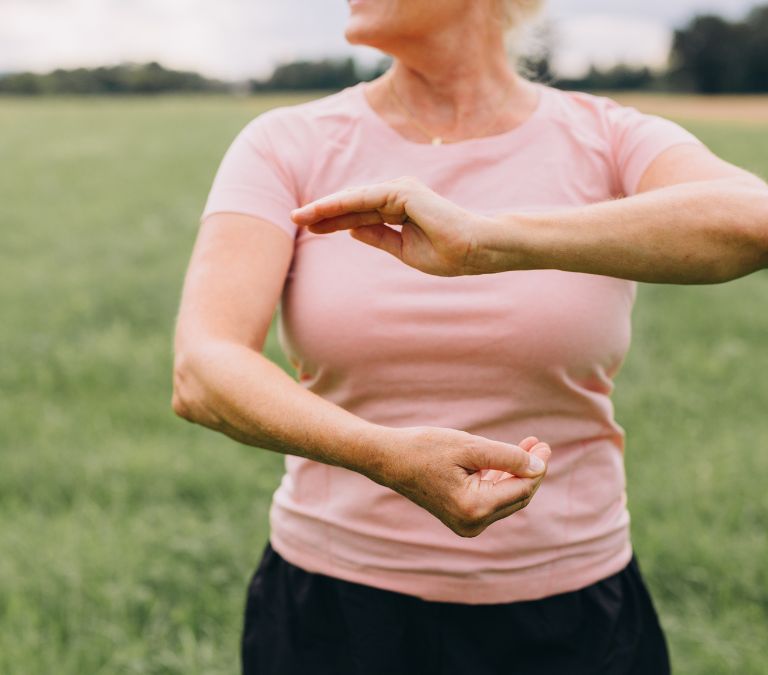
I came across this when I was reading one of my favorite books. I realized that one of the characters did a lot of Taichi, so I read a bit about it, and it turns out that this ancient Chinese practice helps with menopause symptoms.
Because it includes a relaxing component, it is frequently referred to as “meditation in motion.” It makes it particularly effective at reducing the anxiety associated with menopause. This routine comprises a series of slow-paced actions named after animal movements, and you have to walk slowly and gently through them while breathing deeply.
One of my favorites is “white crane spreads its wings,” which is meant to mimic the actions of a crane when it is about to take off in flight. Tai chi has been proven in several studies to increase flexibility and strength. It is very important because we all know how we wake up most mornings to stiff and aching joints, a condition compounded by the fact that we are menopausal. Waking up like this takes its toll on our day, so anything to help reduce that effect is a step short of a minor miracle.
According to some studies, it can help decrease blood pressure and improve sleep. It is another crucial reason why this routine highly benefits menopausal women. We are at risk of cardiovascular diseases based on our age alone. Menopause compounds that risk, so the fact that this routine helps combat that is a welcome development.
Insomnia is also a situation we must battle as menopausal women, and Taichi helps with that too. The advantages of incorporating this routine into our sessions are immense. However, Taichi requires you to follow the steps accurately. So, ensure you get proper guidance.
- Heavy-duty House Work
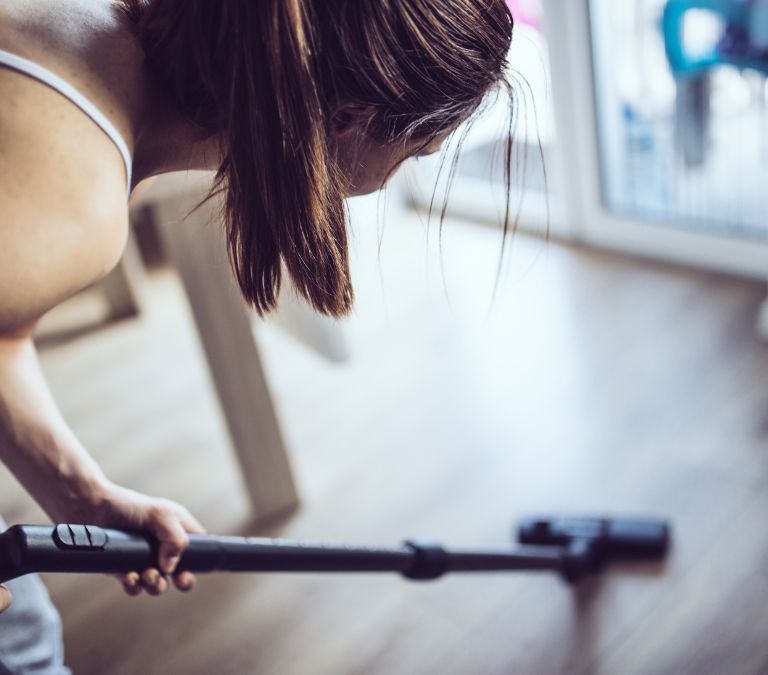
Who is there to say that housework does not count as a menopause exercise. The training goal is to burn calories while incorporating some other benefits. And while some people prefer carrying dumbbells and running the treadmill, you can burn calories by picking up a broom. When I say exercises, I do not mean lazily doing the dishes or dusting the furniture.
I mean some heavy-duty cleaning, the type you do while spring-cleaning. There has been a lot of discussion on whether this housework should be considered an exercise. The conclusion, supported by research, is that doing housework helps you burn as many calories as you would when you carry out 30 minutes of moderately intense workout.
Although the most intensive calorie-burning chores can’t substitute structured exercise, any amount of activity helps, especially when it comes to losing that added weight due to menopause. Besides the fitness advantages of house chores, there are additional benefits: A cleaner home, a lovely yard, and a sense of accomplishment. I always have a silly smile when I am done scrubbing my bathroom. I have a clean bathroom, and the sweat on my body proves I burnt some calories.
How to Find Encouragement and Motivation For Menopause Exercises
Finding the proper menopause exercises to help with your menopausal symptoms is just the first and probably the easiest step. The doing is the hard part. This part is challenging for people who have never exercised before. I know the feeling, so let me give you some advice.
The first thing to do is to set goals. Grab a diary or crack open your notepad app and write them down. These goals must be realistic, specific, and attainable. If you are unaware of how to set these plans, you might need help from someone who can. Setting goals is important because they keep you from getting frustrated by telling you that you are slowly but surely achieving what you want.
It is also a good idea to remember why you are doing what you are doing. As menopausal women, we are susceptible to many conditions, and exercising is another way to wade off those conditions.
Finally, do not neglect the effect of having a community. Knowing other groups of women going through what you are going through is very important. It could be friends, family members, or just work colleagues. They will take a bit of the tension off as you can easily talk to them without feeling ashamed.
You guys can swap resources and recommend classes and routines for each other. You can even do some of the exercises together. What is the fun of dancing alone when you could be dancing with someone else? They will be the encouragement you need and a hand to hold you up when you seem to be faltering.
When dealing with menopause symptoms like insomnia or mood swings, getting off the couch is usually the last thing on your mind. However, staying active can help you feel better today and protect you against postmenopausal health problems in the future. Your whole health will benefit from a well-balanced program that includes flexibility, speed, mobility, and strength training.
Try incorporating these workouts into your daily routine to make the second half of your life healthy and productive. Remember, however, that too much of anything can be harmful. Make sure you do not overdo it and stay within a safe limit. If you are unsure how far to take it, talk to a trained expert or your medical provider so you don’t bite off more than you can chew. We do not want you to end up in the OR when you should be enjoying your golden years.

